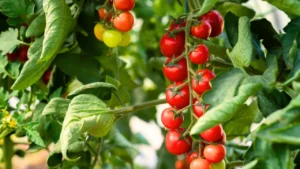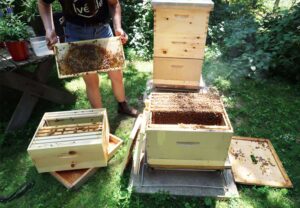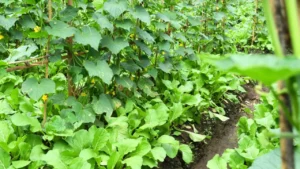The weather didn’t quite hold out as long as I would have liked however. Consequently, I am still waiting for a window to sow a further 23ha of wheat, and then it is just lentils (in a trial being companion-cropped with camelina) to go in after that.
February has been a month of nail-biting inspections. First of all was the visit from Thurrock Health to check that my flour milling operation was safe. I was dreading this since Government guidance, whilst superb and all encompassing, is pretty indecipherable when it comes to something as simple as milling flour which produces a ‘ready to cook’ product of lowest risk when it comes to food safety.
I had tried my best when it came to documentation and on the whole I had covered most of what I needed. I was most pleased by the inspector’s usefulness and how much he was willing to help. He is due to be back out at the end of March to give me the final sign off (once I have completed the few odd jobs to satisfy him).
 |
| A few things have moved on a pace in my processing room now, with the addition of some shiny and very handy pallet racking |

|
| Here is a much better solution for my sieve cleaner, gravity separator and dehuller. Just waiting to put the hoppers on top |
Next on the inspection side was my organic inspection with Organic Farmers & Growers. I am just in the ‘in conversion’ period at the moment, which means that I can’t sell any organic produce off farm yet. However that doesn’t make being inspected any easier! And as someone who despises paperwork as something which takes me away from the more important practical jobs at hand, I was nervous! Everything was in order though and I was glad to be able to tick it off the list.
By the time this blog is published, the Crowdfunder for the documentary film I am working on, Six Inches of Soil, will be live. This is a film all about regenerative agriculture: attempting to educate not just the public, but farmers too, as to how to adopt these systems into their farms. I think it is a really important movie to be made at the moment, highlighting the incredible work by a number of farmers in the UK to embrace nature-based techniques into their
farming operations. If you feel like you could spare some money to help us get this film made that would be absolutely superb. The link is:
https://www.crowdfunder.co.uk/p/six-inches-of-soil-film
 |
| On the farm filming one of the Crowdfunder promos for Six Inches of Soil |
February 2022 will seemingly be synonymous with Dudley, Eunice & Franklin, the unnecessary storms that ravaged the country. Compared with some other farmers whom I follow on Instagram we definitely got off lightly. Shed rooves remained intact, with just one long length of fibre-cement flashing being torn off a barn. I even copied other farmers from social media in putting straw bales up in front of the roller shutter doors in an attempt to prevent them blowing in. This
kind of worked, but only kind of! One door partially popped out of its runner, requiring half an hour with an hammer and screwdriver making a lot of noise to bend the metal back in place and get it running properly. A second door managed to shear the bolts on its runner, which looked bad, but meant at least that we could fix it ourselves (once the storms abated!) rather than having to employ the professionals. Other than this, we had a couple of trees down, including one on my lovely new livestock fence, but I can’t complain!
 |
| Using bales to attempt to stop the wind blowing our doors in |
 |
| It worked on the whole…although this is where the bolts holding the runner channel sheared off |
 |
| Not ideal. But it could have been a lot worse |
 |
| And a tree down on my lovely new fence |
 |
| Thankfully with a bit of work with the chainsaw the damage isn’t too bad and only aesthetic |
Calving on the farm has finally begun for this year. However, it didn’t start in the way I wanted. Two weeks later than the potential first calving date (based on when the bull was put into the paddock with the cows) the first cow showed proper signs of calving: she had already bagged up, with her udder looking full to bursting, her vulva was very swollen, and she finally had her tail in the air and had separated herself from her herd-mates.
 |
| It’s really clear to see that labour has started here, with her tail in the air and back arched under contraction |
The cow in question was cow-238. One of my favourites (she was first to calve last year and happens to be really friendly). She has tested positive for neospora, but that didn’t cause her to abort last time or prevent her from becoming pregnant this time.
As I was in the field with her, she actually lay down and I saw her waters break, so I knew for sure things were happening. Over the course of the day I went to watch her regularly, never leaving her for more than 30-45 minutes. Having new lives on the farm is such an exciting time of year! By soon after lunch I spotted two hooves and a nose poking out. Good news: the calf is presented well (i.e., not breach) so everything should be fine.
I took this opportunity to head to the agroforestry field on the quad bike. I was looking to move the other bunch of cows into that field, and Dad was there to give me a hand, with all the cows looking eager to move from the marsh into the good grazing that the new field had to offer. The cows moved easily, got their heads down in the new field, and I sorted the electric fence, eagerly jumping back on the quad to go back and check on cow-238.
As I got back to the maternity paddock, I saw that the calf was born. I was ecstatic, jumping off the quad at a respectful distance and running the final 100 yards to see if I had a heifer or bull calf. But as I approached it was clear that something was wrong. The cow was prostate on her side. The calf was calved, but half of the back legs were still in the cow. And on closer inspection the calf was dead.
Forgetting the calf my worry transferred immediately to the cow. I carefully pulled the calf legs out and set the corpse to one side. Then I tried to rouse the cow. Thankfully she looked up at me and went to stand. Clearly it had been a difficult calving, and the calf was big for a Red Poll (I later weighed the body as 43kg). I rang Mia who said she’d come home straight away with some calcium for the cow to help her feel better, and suggested that I administer some Loxicom as long-acting pain relief for the cow (luckily she let me inject her unrestrained without any need for a crush or gates). I then carried the dead calf to the quad and drove it back to the farmyard.
There are two schools to thought when it comes to dead calves: should you let the cow see the dead calf and understand, or take the calf away. I elected the second option, primarily since I wanted a post-mortem, and also because the cow has neospora. The last thing I wanted was for a dog to lick the dead calf and infect themselves via the amniotic fluid or other birth material. Removing the calf has resulted in some soul-destroying lo-ing from the cow, audible from several hundred meters away and for a number of days.
Dairy cows on the whole have had a lot of their maternal instinct bred out of them, and this separation is often not as bad. But for a maternal breed such as a Red Poll, separation is more harrowing.
 |
| The dead calf which I removed on the quad bike. It had to be taken to be incinerated |
With the calf back in the yard, Mia arrived. Just two weeks previous she had completed some CPD (Continuing Professional Development, necessary for vets) in post-mortems, so it was rather timely. However, it was hardly the most romantic Friday evening watching her dissect the corpse (even more so since she is vegetarian!). She took lots of samples including of the lungs, heart, kidney, liver, brain, intestines, spinal cord, and foetal stomach contents, which have all gone off to the lab. The results won’t be with me for a week or two. So for the time being, I am really hoping it is just a one off.
With the weekend commencing so poorly, I was nervous walking down to the cows on the Saturday morning. Even more so when I witnessed the signs of cow-624 beginning to calve. She is a pretty cow, but not especially large. However she produced the most stupendous calf last year: Engelbert. So I was excited in my trepidation. I am putting the infrastructure on the farm this year to enable me to keep any bull-calves entire (i.e., not castrate them) such that I can sell them as bulls to another farmer in around 18 months’s time. The infrastructure is important since Red Poll bulls can become fertile from as young as six months old. They aren’t big enough to successfully serve cows at that age, but they can serve their sisters! So you need to be able to separate the male and female calves at around five months (to be on the safe side).
Knowing that cow-624 was calving, I attempted to keep myself busy and ignore the horrendous previous day. Mum was anxiously checking regularly also, and by 3pm we had a new little life on the farm! I can’t explain how happy calving makes me. Also, I say
little, but this guy was yet another
chonker. Apparently a lot of farmers are struggling with large calves this year, with the assumption being that it must be to do with the remarkably good grass growth that we had last year.
 |
| Phew: a live calf. And isn’t he a little beauty. Note my poor writing on the ear tag though! |
I am super pleased too that the calf is a bull, and I will be keeping him entire. He is called Camembert – my naming convention for bulls being cheeses. There is still a chance that he will be surgically castrated at six months if I feel that he isn’t growing into the sort of shape that would be appealing for someone to buy as a bull, but I have my fingers crossed that he will be a good one.
On Sunday morning, Mia and I popped to the field to ear tag him. This time I have new management tags which enable me to write the animals’ names on their tags too, in permanent marker. It just transpires that ‘Camembert’ is a rather long name for a thick pen on a little tag. I made a bit of a mess of it!
As it stands, many of my cows are looking close to calving, but I still only have one live new calf. Since he is hopefully a keeper, I am really enjoying making a big fuss of him to try to ensure he is gentle and handle-able.




















